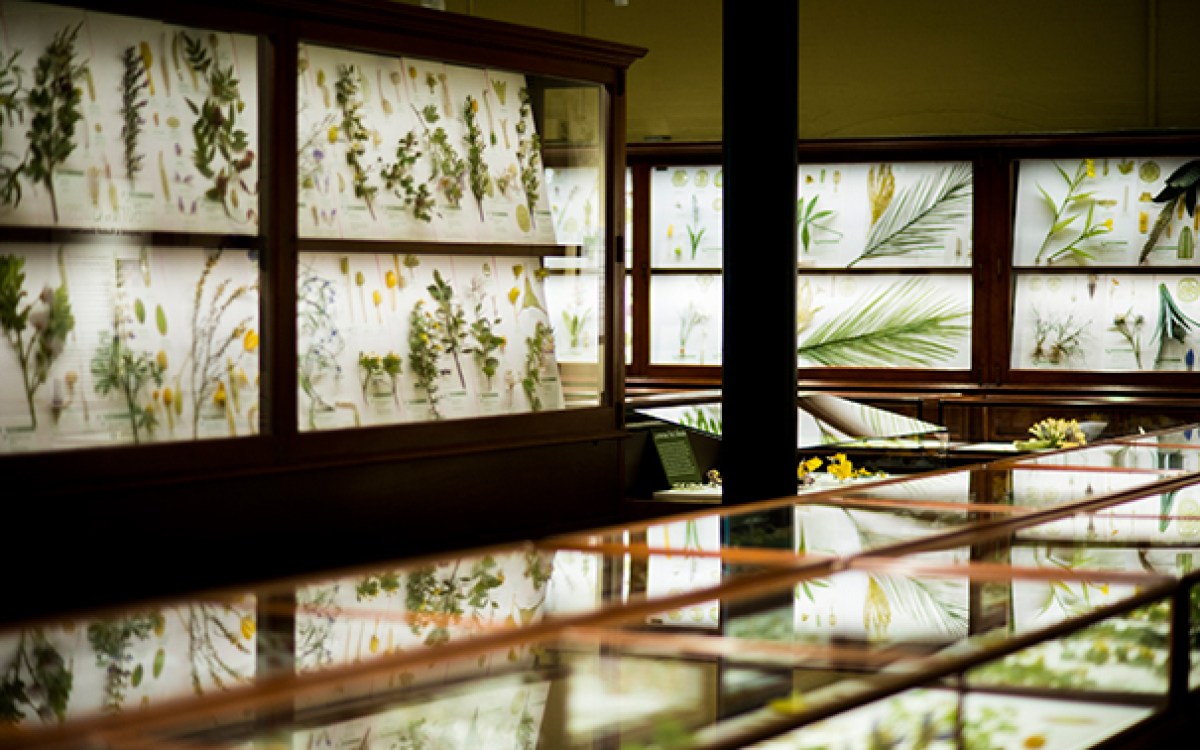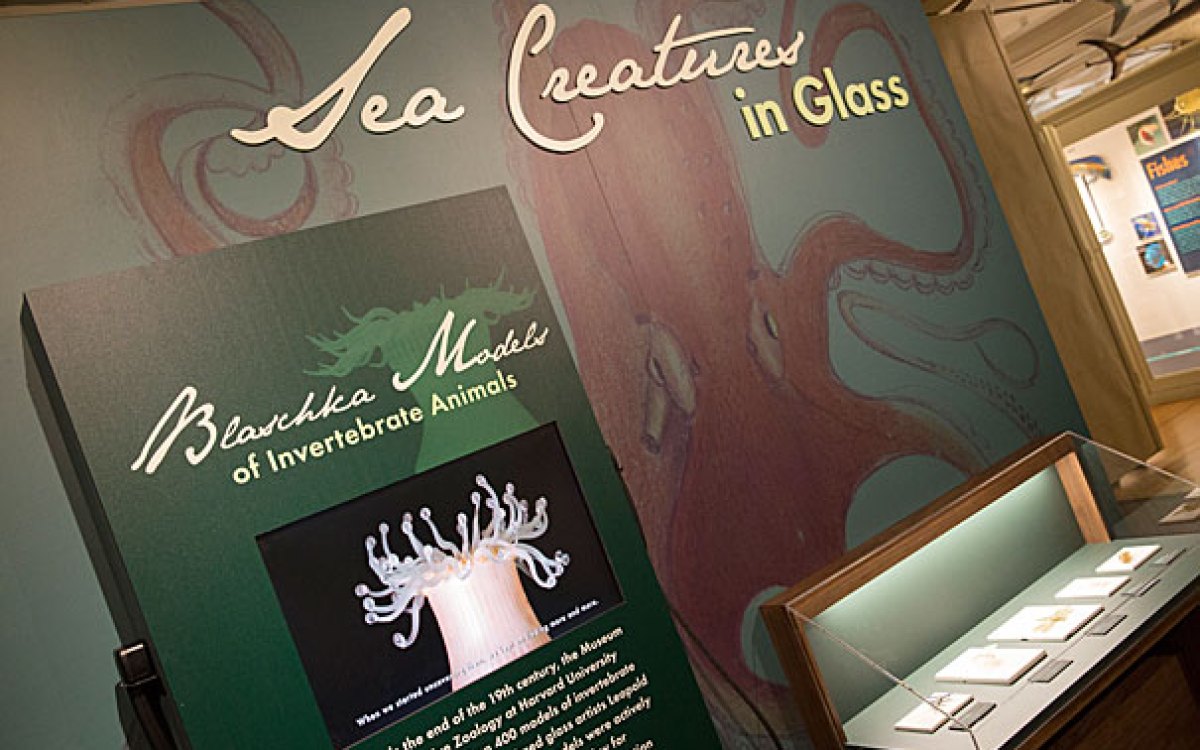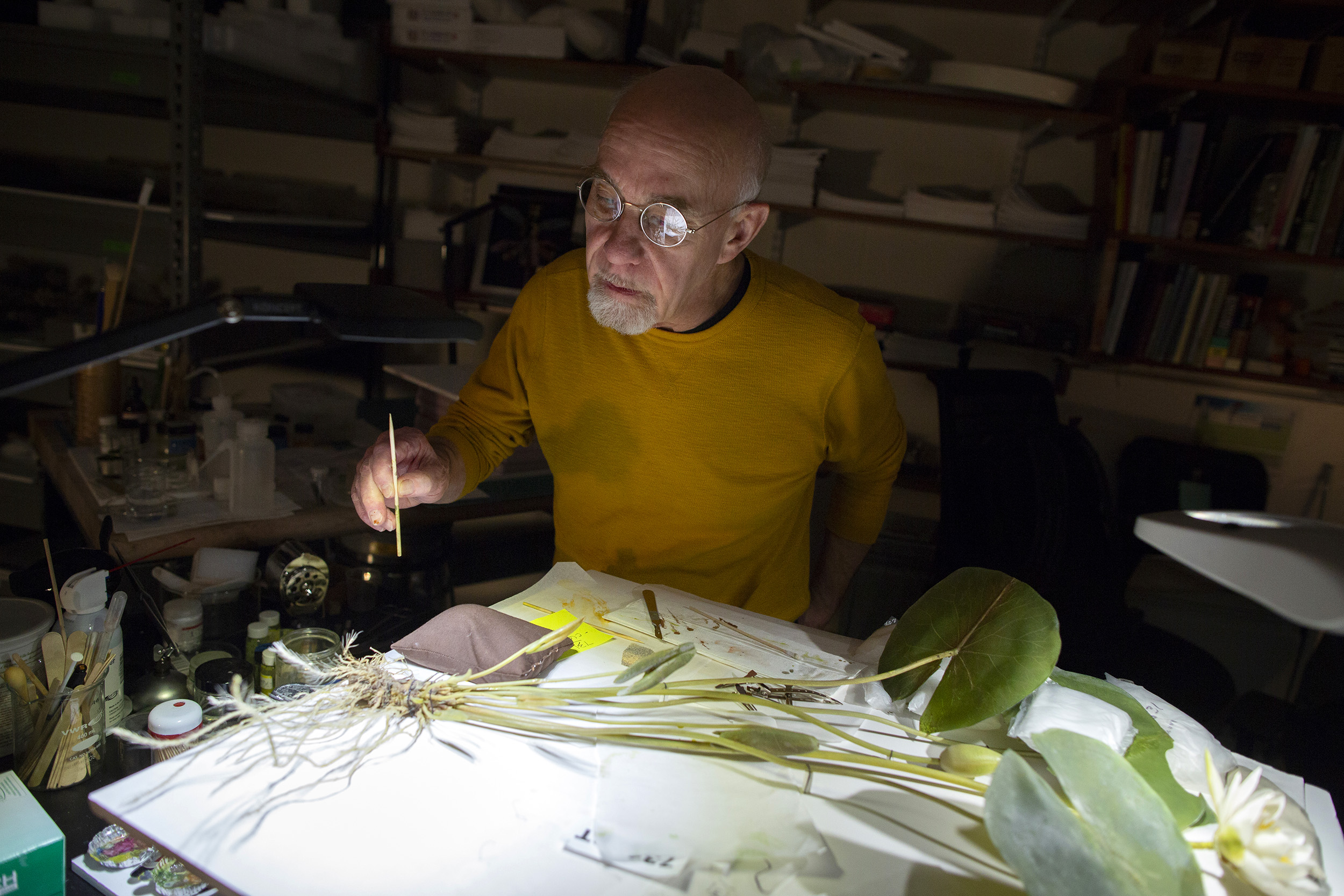
Scott Fulton carefully prepares a water lily to be photographed.
Stephanie Mitchell/Harvard Staff Photographer
Leafing through Glass Flowers
New book captures rare glimpse of Blaschka botanical models outside of their cases
For the first time in 25 years the Harvard Museums of Science & Culture is producing a book on the Ware Collection of Blaschka Glass Models of Plants, better known as the Glass Flowers.
On a recent Thursday, a team delicately repaired, cleaned, and photographed select models in a dark, climate-controlled room. A good portion of the 4,000-piece collection, crafted exclusively for Harvard by father-and-son artists Leopold and Rudolf Blaschka from 1886 to 1936, lined shelves and bakery racks nearby.
The collection’s conservator, Scott Fulton, said he’s constantly asking himself of the Blaschkas: “How did they do this?”
“For a while we were trying to figure out how they made certain leaves seem fuzzy, and we realized they used little chunks of cotton fibers,” said Donald Pfister, curator of the Farlow Library and Herbarium of Cryptogamic Botany and the Asa Gray Professor of Systematic Botany, who is helping with the project.
Fulton prepared the flowers for the photo shoot, work that ranged from dusting them off to repairing damage caused by vibrations and glue joints drying out after 120 years. He held up a bottle of “green slurry,” made of acrylic resin, which he uses when he has to match a color.
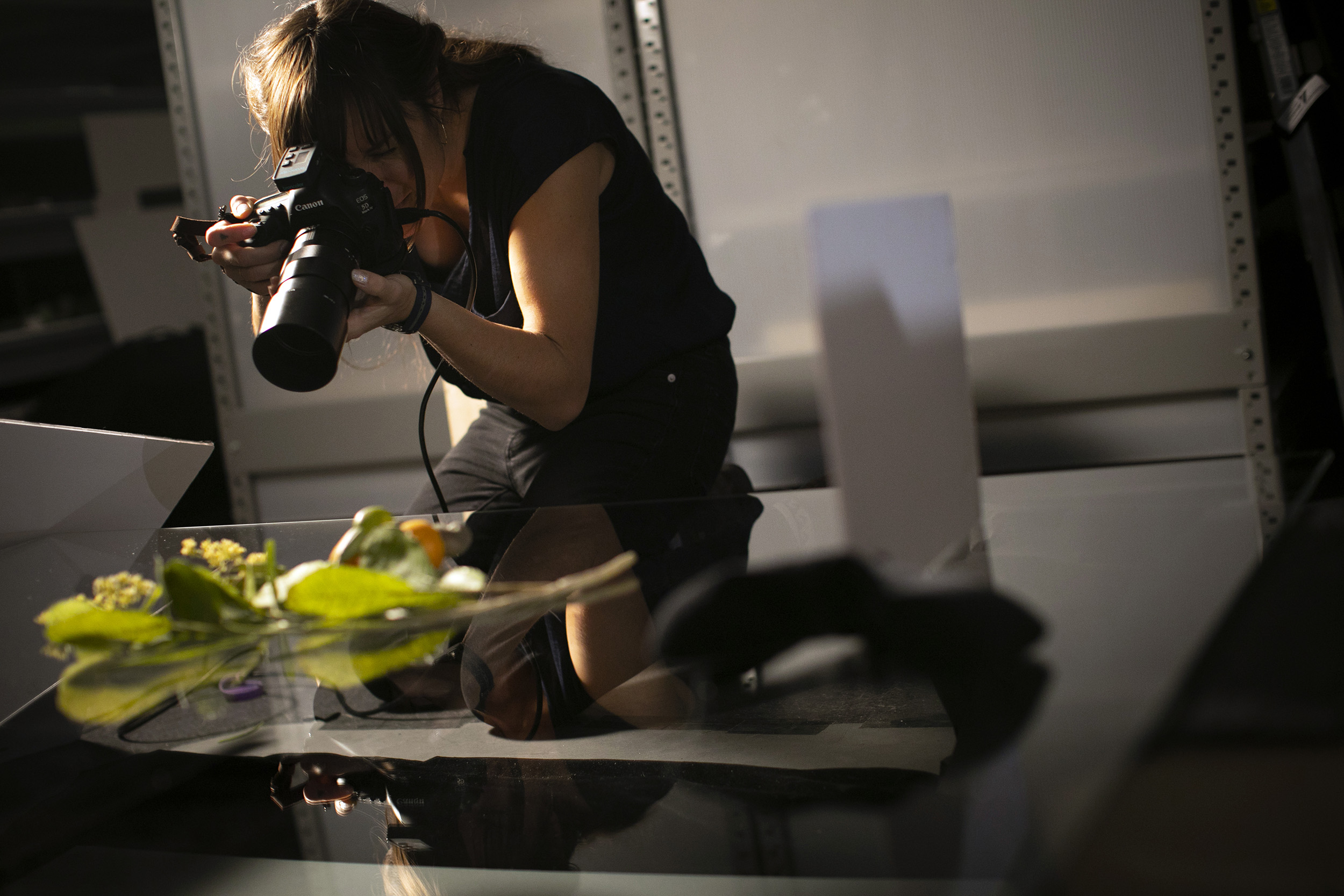
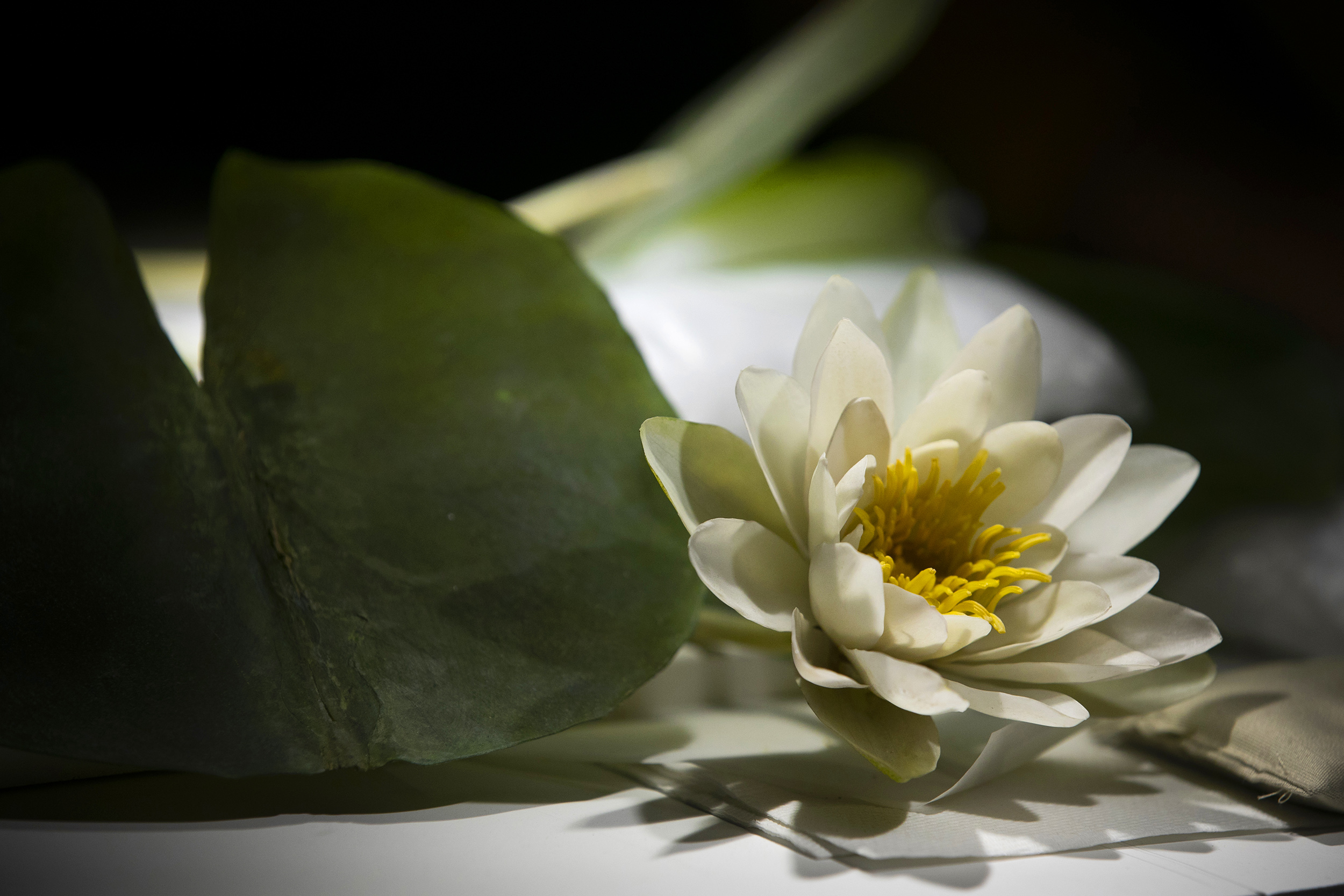
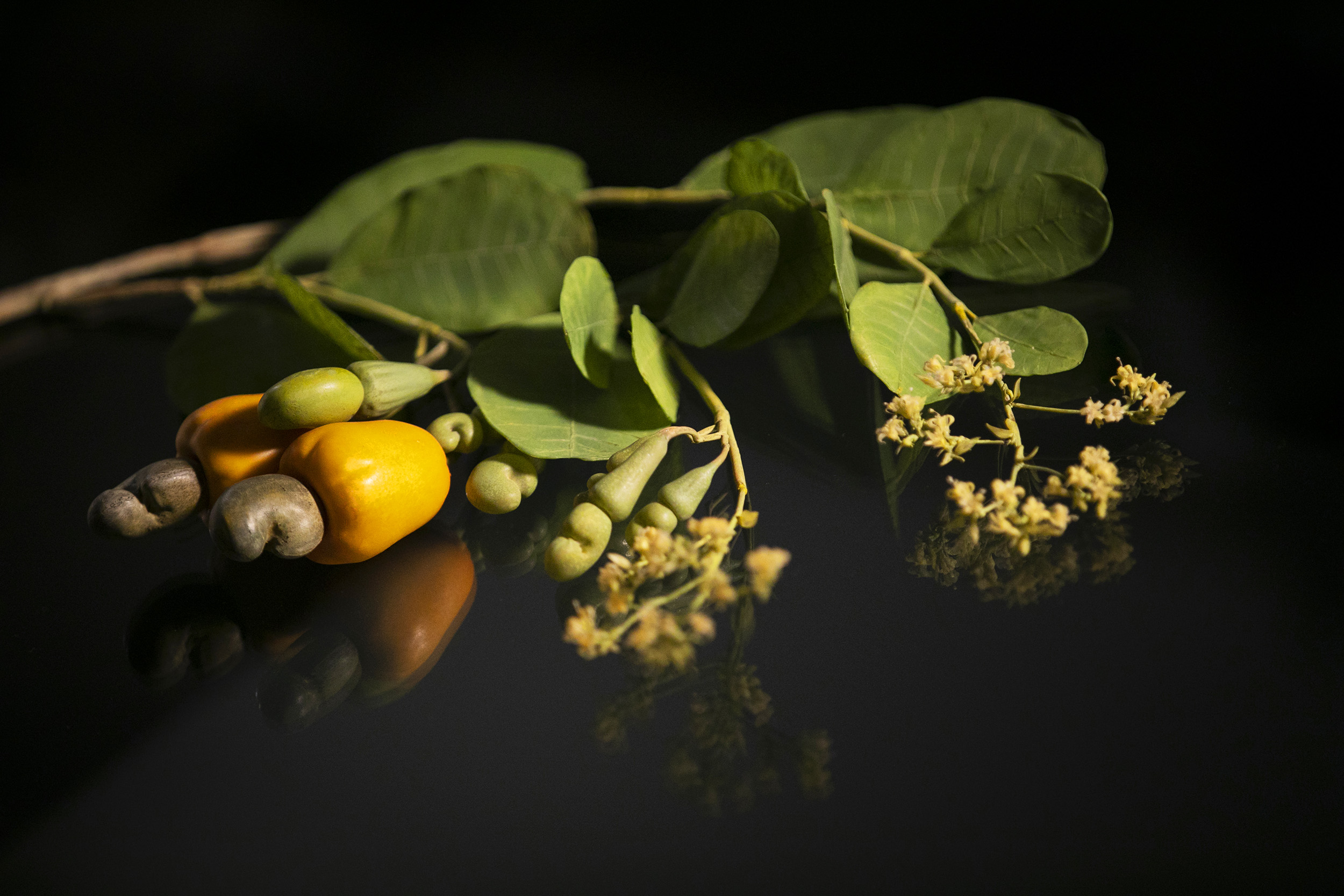
Nymphaea odorata, Rudolf Blaschka, 1906; and Anacardium occidentale, Leopold & Rudolf Blaschka, 1894.
Photos by Stephanie Mitchell/Harvard Staff Photographer
Photographer Natalja Kent zoomed in on her laptop to show the undulated detail of the edge of a ginkgo leaf, one of 60 specimens she’s capturing for the book, about half from museum displays and half from storage. Through her lens, she said, she sees details down to individual pollen deposits.
Pfister said the models are so lifelike that the book could easily end up looking like a field guide, so the team behind the project decided to explore the details of the collection that expose the “hand of the maker.”
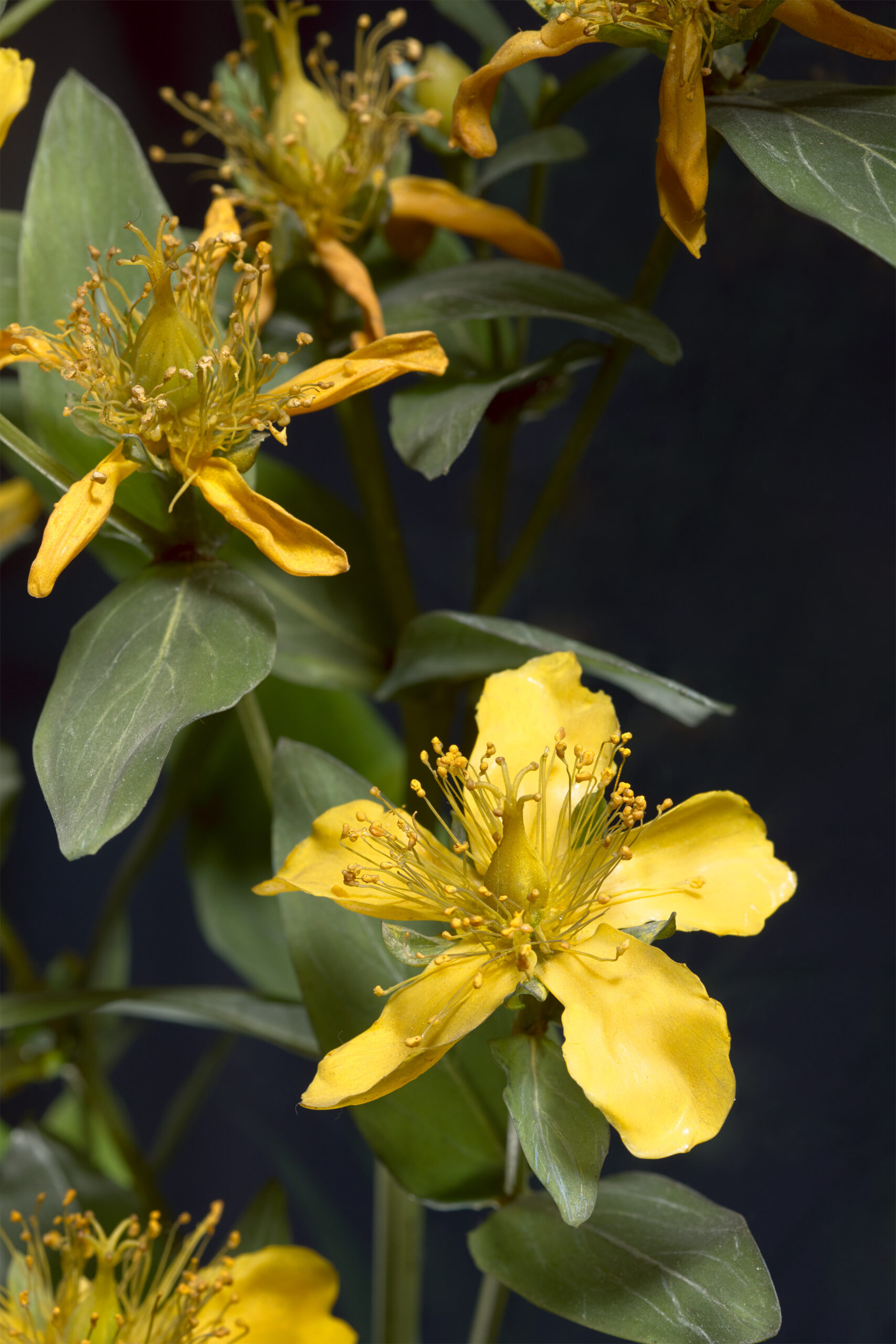
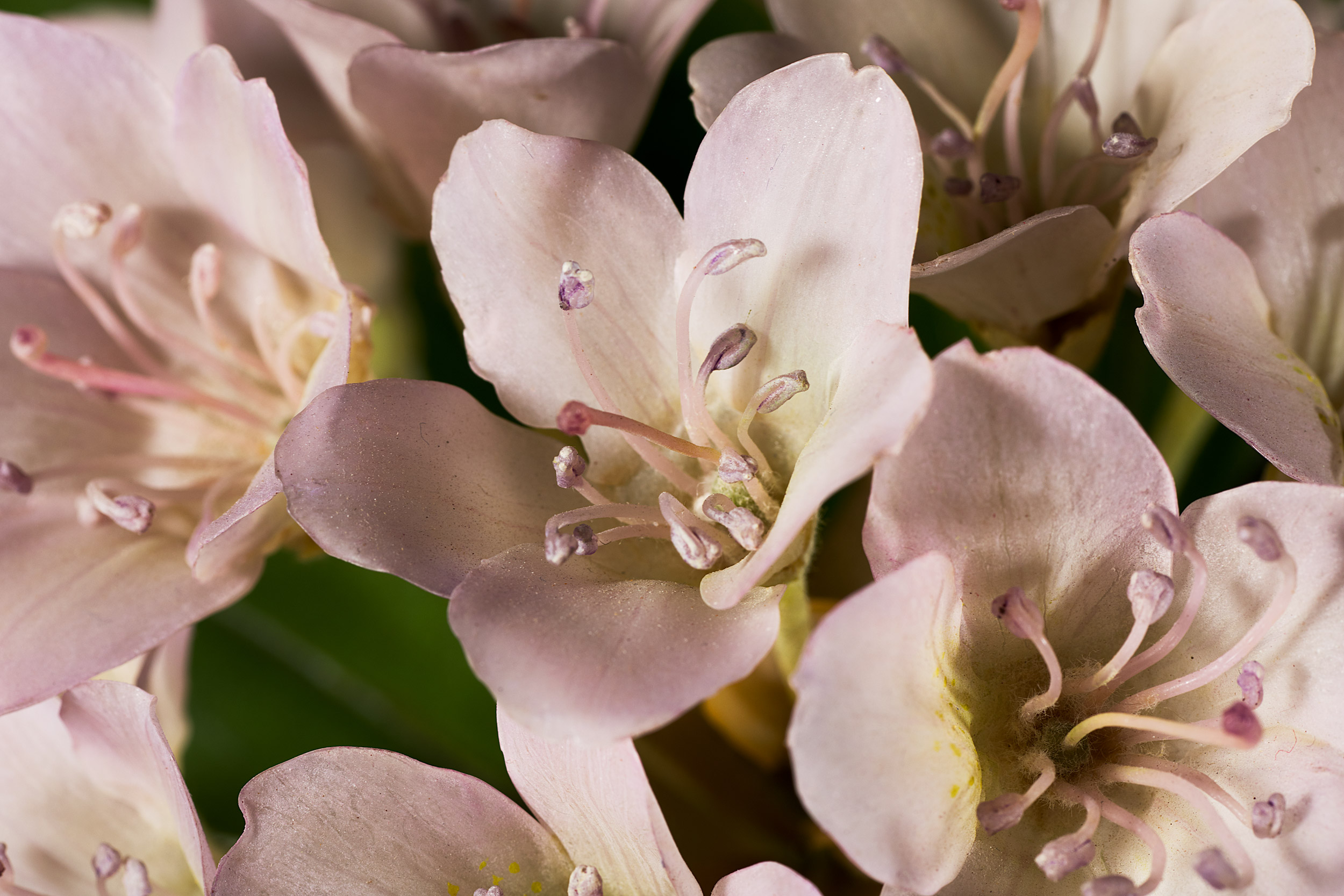
Hypericum ascyron, Rudolf Blaschka, 1900; and Rhododendron maximum, Rudolf Blaschka, 1896.
Photos by Natalja Kent © 2019 President and Fellows of Harvard College
The Glass Flowers were commissioned by Harvard in the late 19th century because they offered better teaching opportunities than pressed, dried herbarium specimens. The Blaschkas had previously created glass sea creatures, which Harvard and many museums around the world still have on display.
Jennifer Brown, the manager of the collection, paraphrased the botanist Paul Mangelsdorf’s observation that part of what makes the Glass Flowers so special is that the Blaschkas weren’t aiming for scientifically perfect specimens — the type a trained botanist might be tempted to make — they were re-creating the plants that they saw. She pulled out a model of a Hypericum species and pointed out the variety of stages that the flowers were in, from immature to wilting.
The book will be available in the spring of 2020.




